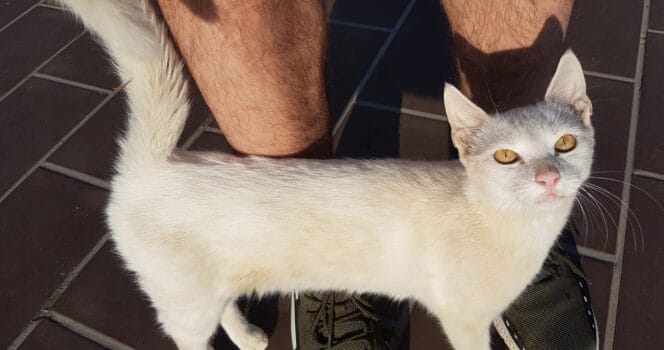Cats might not use words, but that doesn’t mean they don’t have a lot to say. In fact, their behavior speaks volumes — though sometimes it leaves us completely puzzled. From unusual bathroom habits to mysterious body language, your feline friend has its own way of expressing feelings, needs, and boundaries.
Let’s dive into some of the most bewildering cat behaviors and what your whiskered companion might actually be trying to tell you.
Upright Peeing: A Message, Not a Mess
Ever found a little puddle on the couch or a suspicious damp spot on the wall and thought your cat was having health issues? Don’t jump to conclusions. This habit, especially when the urine is sprayed higher up rather than on the floor, is your cat’s version of a memo to the rest of the animal kingdom: “This is my turf.”
Though it’s commonly linked with unneutered males, females and even neutered cats sometimes do it too. It’s not about poor potty training — it’s about setting boundaries. And if another animal dares challenge that scent post, your cat might feel the need to reassert its claim with another “message.”
Panting: Not Just a Dog Thing
Seeing a cat pant can be alarming — it’s not as common as in dogs, but it can happen, especially on blistering hot days. When the temperature climbs too high, some cats resort to open-mouthed breathing to cool themselves. They’ve also got another trick up their furry sleeves: grooming. By licking their coats, the saliva evaporates, creating a cooling effect — kind of like us dabbing sweat with a cool towel.
So if your kitty’s lounging in a sunbeam and suddenly starts panting or grooming intensely, it’s just trying to beat the heat in its own way.
Leg Rubbing: A Warm Welcome (With a Hidden Meaning)
You’ve just walked through the door after a long day, and your cat immediately starts weaving between your legs, purring and nudging you. Sure, it’s adorable — but there’s more to it than just affection.
Cats have scent glands in specific parts of their bodies — like their cheeks, chins, and tails — and when they rub against you, they’re marking you with those scents. It’s their way of saying, “You belong to me. Welcome back to our territory.” It’s both an expression of comfort and a form of communication, whether they’re craving a snack, playtime, or just your presence.
When Rubbing Becomes Excessive
While rubbing is usually harmless and even sweet, a sudden change in frequency or intensity might hint at something deeper. If your cat is rubbing excessively — especially against objects or people in a more frantic or aggressive manner — it could be worth a checkup.
Possible causes include:
Allergies
Flea infestations
Ear infections
Sensory disorders
Neurological issues
Always trust your gut. If the behavior seems off or out of character, a visit to the vet can provide peace of mind.
Pinned Ears and Narrowed Eyes: The Subtle “Back Off” Signal
Sometimes, cats don’t need claws or hisses to express displeasure. If your feline flattens its ears, squints its eyes, and gives you that unmistakable sideways glance, consider it a warning: “Not right now.”
It’s not always aggression. Often, it’s mild irritation or even fear. When you see whiskers drawn tight against their face and that tail starting to twitch — that’s your cue to give them space. No hard feelings — they just need a moment.
The Paw-Stomp Before the Pounce
Ever watched your cat pause, eyes locked on a toy (or a sock), then start doing that funny little stomp before launching into the air? That dramatic pause and foot wiggle isn’t random — it’s primal.
This ritual is part of the predator’s preparation: pupils widen, muscles tense, and paws shift to find the perfect grip. It’s like an Olympic sprinter settling into the blocks before the gunshot. This behavior runs deep in their DNA, a leftover from generations of wild hunters fine-tuning their strike.
Reading Between the Meows
Cats might not speak our language, but they’re constantly communicating — we just have to learn how to listen. Every quirky action, from marking territory with scent to that dramatic leap across the room, is a message wrapped in instinct and emotion.
By paying attention to these signals, you not only understand your cat better — you deepen your bond with them. So the next time your feline acts a little strange, don’t brush it off. Instead, lean in and ask yourself: What’s my cat really trying to say?
